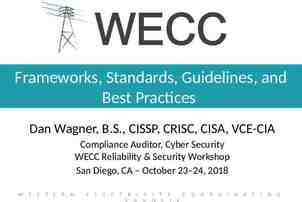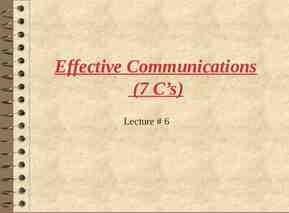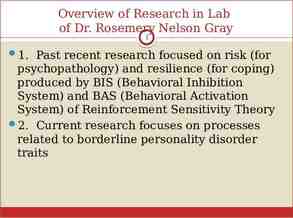Greater Lawndale Healthy Work Project CHW Retreat Day 1 Sept 9, 2019
22 Slides5.94 MB

Greater Lawndale Healthy Work Project CHW Retreat Day 1 Sept 9, 2019

Center for Healthy Work A NIOSH Center of Excellence for Total Worker Health A research and education center (est. 2016) to advance the health and well being of workers in Chicago, the state of Illinois, and the nation. Mission: to remove barriers that impact the health of low wage workers in the increasingly contingent workforce. Aims: to identify and promote employment programs, practices, and policies that will improve worker and community health locally, across the state, and throughout the nation. Everyone has the right to a healthy job

Goal/Meta The goal is to establish a culture of occupational health in communities that will move people from precarious to healthy work by increasing community capacity for addressing healthy work. El objetivo del Proyecto de trabajos saludables de “Greater Lawndale” es para establecer una cultura de salud ocupacional en comunidades, donde las personas pasaran de precarias condiciones hacia condiciones saludables de trabajo, incrementando la capacidad de la comunidad, enfocándonos en trabajos saludables.

Greater Lawndale Healthy Work Project Aims 1. Determine the context of, and barriers and pathways to healthy work in two neighborhoods in Chicago that experience high socio-economic hardship: Little Village and North Lawndale. 2. Build community capacity to recognize worker health as an important determinant of community health, address workrelated health in community total worker health efforts, and sustain effective, newly developed community-based worker health promotion interventions.

Exploring Precarious Work to Build a Culture of Occupational Health at Community Level 5

Research Partners Jeni Hebert-Beirne Lorraine Conroy Preethi Pratap Sylvia Gonzalez Alisa Velonis Dolores Castañeda Rodney Johnson Alexis Grant Maria Velazquez-TCEP Patricia Pereda-TCEP Adriana Magaña Yvette Castañeda Adlaide Holloway - SUHI Suzanne Zoheri-SAH Teresa Berumen-SAH Madeline Woodberry-SUHI Robert Calhoun-SAH Angelica Rosales-SAH Linda Forst Kathy Rospenda Marsha Love Jennifer Felner Cindy San Miguel Ana Genkova Sarah Hernandez Sandra Avela Melissa Creshfield Aeysha Chaudhry Journie Raulston Auturo Carrillo Fanny Diego Rev Bobby Smith Brenda Palms-Barber Jaqueline TCEP Lara TCEP

Community-based Participatory Research - Is a collaborative approach to research - Equitably involves all partners - Places primacy on the community’s issues of interest - Recognizes the unique strengths that each bring Researcher– research training and skills, funding, institutional support Community partner – local knowledge, relationships in the community, personal stake in the research, ability to sustain interventions/changes - Focuses on: social science social activism social change

Method Research Question Interviews/ Entrevistas What are the community’s needs and assets with respect to work? Focus Groups/ Grupos de Enfoque How do residents experience work? How does work impact health? Community Health Survey/ Encuesta de Salud Comunitaria What are the characteristics, barriers, pathways to work? Concept Mapping/ Creación de mapas de ideas Y1 FQ: “When I think of my work situation, or people who live in my community in similar work situations, one way work impacts our health (good or bad) is .”

Research Question Method Dissemination What are the community’s needs and assets Interview with respect to work? APHA 2019 Manuscript in Development How do residents experience work? How does work impact health? Composite Stories Community Report GLHW Conceptual Model What are the characteristics, barriers, pathways to work? Focus Group Community Health Survey Stress and Health 2019 SCRA Symposium 2019 How do residents perceive work impacts their health? Concept Mapping APHA 2019 AJIM Under Revise and Resubmit Review SCRA Symposium 2019 GLHW Conceptual Model Synthesis of Existing Data Sources Secondary Data Analysis Masters Thesis What are the characteristics of workplaces in GL? Investigation Observation WWW Dataset Manuscript in development What are the health needs of street vendors? Secondary Data Analysis Observation Poster Quilt

Greater Lawndale Healthy Work Project Road Map 9/1/16-8/31/21 Organized Greater Lawndale Healthy Work Community Research Team 2 Concept Mapping Interviews Asked key community stakeholders what are key issues identified how residents see work impacting health Focus Groups Survey Ask residents about work characteristics Action Mapping Identify actions to take based on research findings Checked with with community residents on emerging findings Asked residents about work experiences Test Actions Build a Culture of Occupational Health See which actions work best We are here

A Systematic Analysis of Census and Labor Data to Create a Community Profile of Work (Morgan Lawson) LORRAINE

9 ye a ye a rs old 14 10% 8% 6% 4% 2% 0% GL Chicago Percent of Population to to 5 rs ol d ye 15 ar so to 19 ld ye 20 ar to so 24 ld y ea 25 rs to ol 29 d ye 30 ar to so 34 ld ye 35 ar to so 39 ld ye 40 ar to so 44 ld y ea 45 rs to ol 49 d ye 50 ar so to 54 ld ye 55 ar to so 59 ld ye 60 ar to so 64 ld y ea 65 rs to ol 69 d ye 70 ar so to 74 ld ye 75 ar to so 79 ld y ea 80 rs to ol 84 d ye 85 ar so ye ar ld sa nd ov er 10 5 Un de r Age Distribution 12% Percent Non-White 100 90 80 70 60 50 40 30 20 10 0 GL 0% Chicago 90% 80% 70% 60% 50% 40% 30% 20% 10% Native to US Greater Lawndale Foreign born: City of Chicago

Level of Education Attained Graduate or professional degree Bachelor's degree Education Level Associate's degree Some college, no degree High school graduate (includes equivalency) 9th to 12th grade, no diploma Less than 9th grade 0.0% 5.0% 10.0% 15.0% Percent of Population Greater Lawndale City of Chicgao 20.0% 25.0% 30.0% 35.0%

Travel Time to Work Mode of Transportation to Work Worked at Home 60 minutes or greater Taxicab 45 to 59 mintues Walked Travel Time 30 to 44 minutes Bicycle 20 to 29 minutes Public transportation (excluding taxicab) 10 to 19 minutes Car, truck, or van - Carpooled: Car, truck, or van - Drove alone Less than 10 Minutes 0% 0% 5% 10% 15% 20% 25% 30% 35% 10% 20% 30% Percent of Workers Age 16 and Older Percent of Workers age 16 and older that did not work at home City of Chicago Greater Lawndale City of Chicago Greater Lawndale 40% 50% 60%

Number of Weeks Worked in the Past Year 60.0% 50.0% Unpaid family workers Percent of Population Age 16 to 64 40.0% Self-employed in own not incorporated business workers Federal government workers 30.0% State government workers 20.0% Local government workers Private not-for-profit wage and salary workers 10.0% Private, for-profit workers - Self-employed in own incorporated business 0.0% W e ork o 0t d5 W w 52 e ork ks ee ks ee ks ee s ek we 7w 9w 6 13 o4 o3 o2 t t to 0 4t 7 1 4 1 2 ed ed ed ed ork ork ork ork W W W W o 8t d4 w 49 ks ee Number of Weeks Worked Per Year City of Chicago Greater Lawndale s ek we Did t no rk wo Private, for-profit workers - Employee of private company workers 0% 10% 20% 30% 40% Percent of Civilian Employed Population age 16 and Over City of Chicago Greater Lawndale 50% 60% 70% 80% 90%

Occupation Production Office and administrative support Sales and related Material moving Building and grounds cleaning and maintenance Construction and extraction Food preparation and serving related Personal care and service Transportation Management Education, training, and library Healthcare support Installation, maintenance, and repair Business and financial operations Community and social service Firefighting and prevention Health technologists and technicians Health diagnosing and treating practitioners and other technical Arts, design, entertainment, sports, and media Computer and mathematical Architecture and engineering Law enforcement Legal Farming, fishing, and forestry Life, physical, and social science 0% Chicago Industry Manufacturing Retail trade Health care and social assistance Administrative and support and waste management services Accommodation and food services Construction Transportation and warehousing Other services, except public administration Educational services Wholesale trade Public administration Professional, scientific, and technical services Finance and insurance Arts, entertainment, and recreation Information Real estate and rental and leasing Utilities Management of companies and enterprises Agriculture, forestry, fishing and hunting Mining, quarrying, and oil and gas extraction 2% 4% 6% 8% 10% 12% 14% 16% 18% GL Top 5 Occupations for GL 1. Production (15.3%) 2. Office and Administrative Support (12.6%) 3. Sales and Related (10.0%) 4. Material Moving (8.4%) 5. Building and grounds cleaning and maintenance (7.8%) 0% 2% 4% 6% 8% 10% 12% 14% 16% 18% 20% Chicago GL Top 5 Industries for GL 1. Manufacturing (17.6%) 2. Retail Trade (11.9%) 3. Health Care and Social Assistance (10.7%) 4. Administrative and Support and Waste Management (9.9%) 5. Accommodation and Food Service (9.6%)

20% 7 18% 6 16% Percent of Civilian Employed Population age 16 and Over 12% 10% 4 IR All Industries 3.1 per 100 FT Workers 3 8% 6% 2 4% 1 2% 0% 0 Industry City of Chicago IR All Industries Greater Lawndale US National IR Rate of Occupational Injuries/Ilnesses per 100 Full-Time Workers 5 14%

Individual Earnings 100,000 or more Earnings Range in 2017 Inflation-Adjusted US dollars 75,000 to 99,999 65,000 to 74,999 50,000 to 64,999 35,000 to 49,999 25,000 to 34,999 15,000 to 24,999 10,000 to 14,999 1 to 9,999 or loss 0% 5% 10% 15% Percentage of Population City of Chicago Greater Lawndale 20% 25% 30% 35%

Earnings by Level of Education 80,000.00 70,000.00 Earnings in 2017 Inflation-Adjusted U.S. Dollar 60,000.00 50,000.00 40,000.00 30,000.00 20,000.00 10,000.00 - Less than high school graduate High school graduate (includes equivalency) Some college or associate degree Greater Lawndale City of Chicago Bachelor's degree Graduate or professional degree

Percent of Population Falling Below the Poverty Threshold in the Past 12 Months 60% Did not work 50% 40% Worked part-time or part-year in the past 12 months 30% 20% Worked full-time, year-round in the past 12 months 10% 0% Employed City of Chicago Unemployed Greater Lawndale 0% Greater Lawndale 10% City of Chicago 20% 30% 40% 50%

Health Insurance 80% 70% 60% 50% 40% 30% 20% 10% 0% Private Public None Employed Private Public None Unemployed Private GL Chicago Public None Not in labor force Private Public Total None

Summary Residents of Greater Lawndale are: Younger Non-white (92% v. 54%) Less likely to have more than high-school (31% v. 61%) Less likely to work year-round (40% v. 56%) More likely to not work at all (45% v. 26%) Are more likely to be employed in low-skill, low-wage positions More likely to live in poverty even if employed year round (10% v. 3%) Are less likely to have health insurance Out of the top 5 industries represented by GL, 4 have injury rates at or above the average national injury rate Wage disparity increases with higher education High percentage of individuals falling below poverty threshold Less access to technology in the home (not shown)






